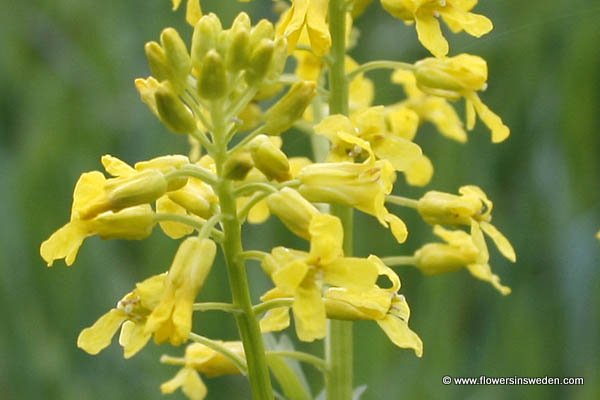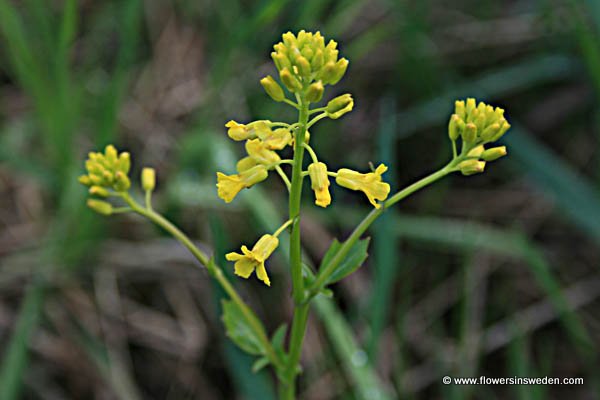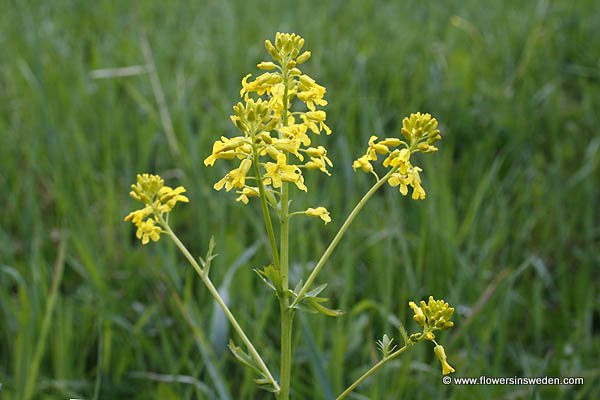
| Scientific name: | Barbarea vulgaris R.Br. | |
| Synonym name: | Barbarea arcuata (Opiz ex J.Presl & C.Presl) Rchb. Barbarea stricta Andrz., Barbarea vulgaris R.Br. var. arcuata (Opiz ex J.Presl & C.Presl) Fr., Barbarea vulgaris R.Br. var. brachycarpa Rouy & Foucaud, Barbarea vulgaris R.Br. var. longisiliquosa Carion, Barbarea vulgaris R.Br. var. sylvestris Fr., Campe barbarea (L.) W.Wight ex Piper, Campe stricta (Andrz.) W.Wight ex Piper | |
| Swedish name: | Sommargyllen | |
| German name: | Echtes Barbarakraut | |
| Nederlandse naam: | Gewoon barbarakruid | |
| English name: | Winter-cress | |
| Family: | Brassicaceae / Cruciferae, Cabbage family, Korsblommiga växter |

|
| Life form: | two-or perennial herb | |
| Stems: | Erect, square | |
| Leaves: | Rosette, alternate, lower leaves lyrate, petiolate, glabrous or with some sparse pubescence, to +20cm long; lobes with coarse shallow teeth or entire; upper leaves reduced, sessile, entire or with a few coarse teeth | |
| Flowers: | Yellow clusters with bright yellow petals, twice as long as sepals | |
| Flowering Period: | May, June | |
| Fruit: | Pedicels elongating in fruit to 6mm long, 4-angled, siliques glabrous, many seeded, erect to spreading, 2-3cm long, slightly compressed, beaked. Beak to 3mm long. | |
| Habitat: | sweet water, bogs, marshes, swamps, pastureland, meadows, farmland, settlements |

Derivation of the botanical name: Barbarea, named after St. Barbara, a former Christian saint and virgin martyr once believed to have lived in Asia Minor in the 3rd cent. She is the patron saint of artillerymen and miners and protectress in thunderstorms. Barbarea was once generally known as her herb, or the Herba Sanctae Barbarae. vulgaris, common. arcuata, bow shaped. stricta, upright. brachycarpa, brachys βραχυϛ, short, little; carpos καρποϛ fruit; short fruited. longisiliquosa, longus, long, siliqua, pod of a legume; long podded. sylvestris, pertaining to woods, growing wild. Campe, campus, open field.

|